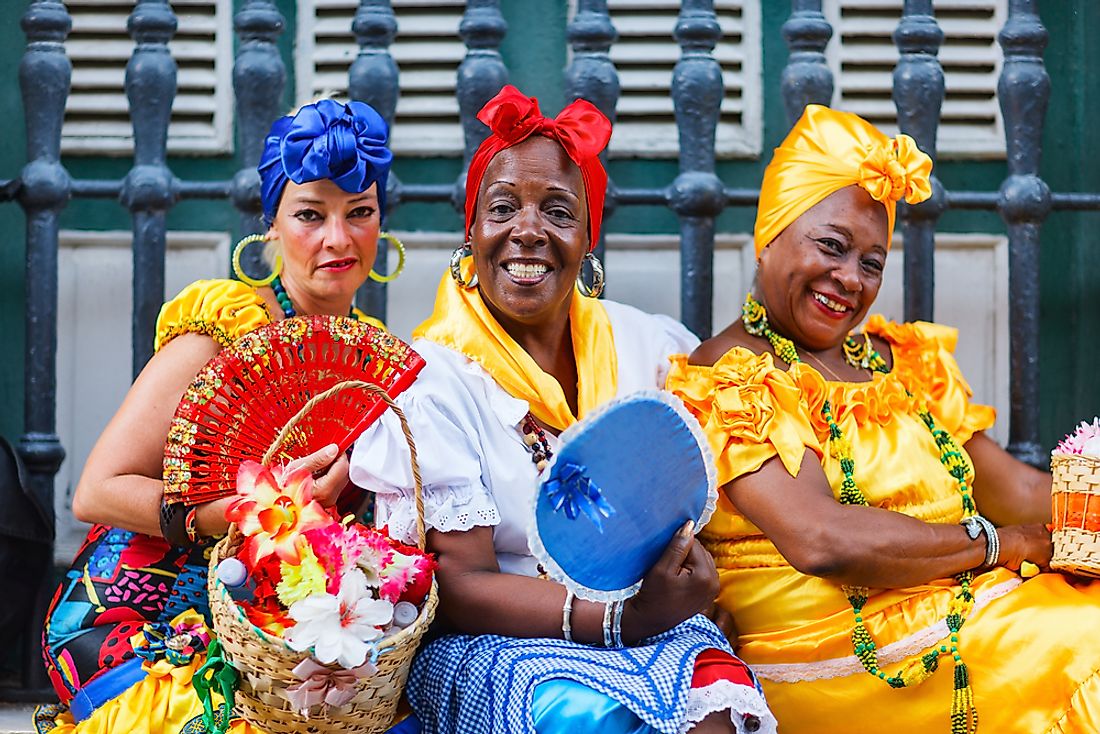Major Ethnic Groups In Cuba

Cuba is composed of several ethnic groups and is home to people of different nationalities. They regard the Cuban nationalities as their citizenry and not the basis of ethnic identity. Most of them are descendants of the Spaniards and have experienced the influence of different aspects of the Western culture. The early Spanish settlers, the French, Portuguese and the West Africans have impacted the general culture of the country. The census done in 2012 revealed that it had a population of over 11 million. The cities that had the largest numbers include Havana which had over two million people. Other leading cities such as Santa Clara and Guantanamo are the other cities with high population.
Major Ethnic Groups In Cuba
White
They are the majority and constitute about 64% of the entire population. Most of them trace their ancestry to Spain in waves of migration that started in the 18th century to Cuba. A significant number migrated to the US in 1959 following the revolution led by Fidel Castro. They settled mainly in Miami and Florida which is just about 90 miles from their country. Some settled in the US territory of Puerto Rico. They have formed a powerful community which has sought to influence the events in their native country. Within Cuba, they mainly constitute the upper-class elites in the racially divided country
Black
They represent 9.3% of the total population. They trace their ancestry to particular African countries in the Sub-Saharan region. Many black Cubans are settled in the Eastern parts of the country. Havana has the highest number of the black population. To this day, there are still waves of black immigrants from countries such as Angola, Haiti, and Jamaica. The black population in the country increased drastically following the revolution led by Fidel Castro in 1959 due to the movement of the majority of the white population to the US. African countries such as Nigeria and Equatorial Guinea in the 17th century received an influx of Afro-Cubans who went there to serve as indentured slaves. Although they were free to return to their countries at the end of their service periods, they often chose to remain behind, marrying and integrating into the culture. Racism exists in the country between the races. However, the political situation prohibits the public from discussing such issues openly. The black people are systematically denied access to top positions in their organizations and have to accept meager salaries.
Mulatto
They are individuals with mixed ancestry implying that one of the parents is black while the other is white. They make up 26.6% of the entire population in Cuba. Some of them have their origin from the women who were kept in slavery but sired their children with the white masters. They were then granted relief from slavery to care for their children. Today, they constitute a significant segment of the Cuban population.
Racial Integration In Cuba
The white, black and the mulatto communities in Cuba have integrated well to form one cohesive society. In spite of the challenges that were historically associated with Cuba such as slave trade and brutal dictatorship, they have overcome the challenges to soldier ahead as one people.
Major Ethnic Groups In Cuba
| Rank | Ethnic Group | Share of Cuban Population |
|---|---|---|
| 1 | White (European Ancestry) | 64.1% |
| 2 | Mestizo or Mulatto (Mixed Ancestry) | 26.6% |
| 3 | Black (African Ancestry) | 9.3% |







